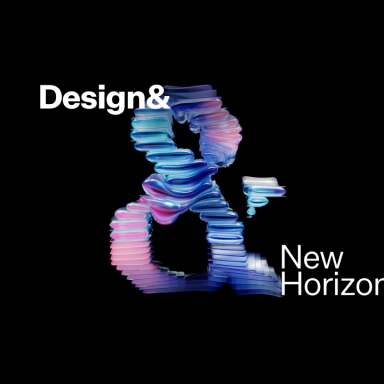Opinion: Where do all the women go?
Many of us find ourselves at a crossroads, feeling individually and collectively that design, Aotearoa and the world-at-large are all at a critical turning point. So, we are setting out to explore that which exists beyond our line of sight – past the immediate and the obvious.
The recent Spring Conversations held in Tāmaki Makaurau, Pōneke and Ōtautahi, presented a dynamic forum for forward thinkers to investigate our Design & New Horizons theme.
Our awesome line-up of guest speakers were tasked with choosing one idea, object or image, to present as provocation for a possible future. Then together with the audience they examined, discussed and expanded on individual and collective ideas of what design is and could be, where the value of design lies now and ahead.
Billy Baxter, Design Director at Daylight brought bold perspective to Spring Conversations in Tāmaki Makaurau, asking “Where do all the women go?”. In fact, it was so interesting we had to share it with you all below.
Where do all the women go?
This year I turned 45, and for the first time in my career, I’ve started to notice something that’s become hard to ignore — I’m often the oldest woman in the room.
Throughout my journey, I’ve been surrounded by a vibrant and talented group of women my age. Together, we navigated the highs and lows of the creative industry, sharing ideas, energy, and ambition. Yet, with each passing year, I’ve watched many of those women drift away — drawn toward different lifestyles or pulled by life’s inevitable transitions.
Today, I often stand in rooms filled with brilliant women 15 years my junior. Their talent and fresh perspectives are genuinely inspiring, yet the difference in age and experience is notable. The global average age of women in the creative industry is 33.9, a number that highlights the youthful energy of the industry but also raises important questions about where women go as they advance in their careers.

Ageism in our industry
Last week, the 2024 Work report from Campaign Brief landed in the studio, celebrating the best advertising work across Australia and Aotearoa. This spread showcases the leadership from the top 20 featured agencies. We’re all familiar with the troubling statistics around leadership in our industry, but seeing it so starkly. It’s enough to make you want to scream.
While there are numerous issues around inclusivity in this lineup, today I want to focus on one that’s less talked about: ageism in our industry, particularly the way it affects women.

How are women seen in society?
Women are often viewed in binary terms — either young or old, with no middle. Jane Evans (Visible Inc) describes the stages of a woman’s life depicted in media as: Little girl. Troubled teenager. Sex object. Career woman. Mum. Old lady waiting to die.
Just to illustrate, if you type “45-year-old woman” into MidJourney, you’ll likely get images of women in their 70s. This isn’t the AI’s fault; it’s a reflection of how society and the media have conditioned us to see women as either youthful or elderly, with nothing in between. We’ve been trained to believe that women beyond a certain age just aren’t relevant. They become invisible.
Why does our industry need older people?
Here’s the reality: we’re all living longer. With advances in medicine, many of us will live to 100, and Gen Z might even see 120.
For women over 45, the narrative shouldn’t end with motherhood or career peaks. We’re past childbearing years, with a quarter-century of work still ahead.
As a consumer, We have more disposable income and a clearer sense of who we are and what we want. In fact, women over 45 purchase 50% of everything. If brands want to connect with the consumers actually buying their products, they should have women who understand this demographic — working on their campaigns.

Why I’m excited about the future
As I contemplate what I want to achieve in my next quarter-century, I feel a renewed sense of excitement.
I’m no longer questioned about my plans for having children. I’ve gained confidence in the importance of my voice and quiet though it may be, I’ve moved beyond imposter syndrome. Like many women, I’ve also embraced hormone replacement therapy (HRT), which has freed me from the horrible perimenopause symptoms that I have silently struggled with over the years. I’m excited because I know I’m not alone in this resurgence. I’m one of many women phoenixing from the shards of the glass ceiling.
Which brings me back to this lovely spread of the industry leadership. No doubt these men deserve the titles they have. But change is coming. The horizon is shifting — Workplaces are becoming more flexible, brands are craving authentic narratives, Gen Z are setting boundaries to prevent burnout. And Women like me? We’re not fading into the background. We’re finding a renewed drive to stay visible, relevant, and powerful.
In the next decade, I’m confident this lineup will start to look different. I know we’ll see more women. One step closer to a tapestry of leadership that better reflects the world we live in. One step closer to include all ages, gender and ethnicities.
About the author:
Billy Baxter is the Designer Director at Daylight. Over the past 20 years, her design journey has taken her right across the globe – from the UK to Switzerland, Australia, and now here in Aotearoa. Billy is a passionate and multi-awarded crafter. Perhaps her greatest accolade is FCB’s Quiet Achiever Award. Now, she’s positively phoenixing as a S.I.N.K, leading her team with quiet determination and a sometimes-quiet pup.




